MAN AS AN INVERTED PLANT, MAN AS A PLANT “UPSIDE DOWN”
We have seen that one can distinguish a three-foldness in man. But very similarly, one can also distinguish a three-foldness in plants, which one could characterize as follows: the flower-, the leaf- and the root parts.
When one studies the root of a plant, one observes the following: the root is usually the most hardened, most woody part of the plant. It has grown in a certain manner and direction, perhaps around stones or around the roots of other plants, and thereafter becomes fixed in its form and fixed to the earth, in which it has rooted itself. Roots are usually grey and immobile, hardened, “woodened.”
When one studies the root of a plant in the garden or in the field one finds a principle root system with an abundance of branches, extending in all directions. Usually the root system is crooked, because during its growth process it has to grow around the roots of other plants, around stones and rocks, and will continue to grow in that direction with the least resistance. It is very interesting to watch the growing root of a tree slowly pushing aside a brick wall or a thick layer of asphalt over time. What kind of forces are actually at work here?
If one takes a pea or another seed and lets it sprout on a piece of cotton, which one keeps wet, one can observe that the main root, the senker, grows out of the pea downwards, always in the direction of the center of the earth. As soon as the main root has been established, branches develop off the main root. If the developing root system remains free to grow in any direction, so that the roots do not meet any resistance, they grow according to a pattern, characteristic of their family, which is usually symmetrical, like an up-side-down Christmas tree. Thus, the root system is usually bilaterally symmetrical. (Some plants have roots which spiral down radially according to a strict mathematical order which is not completely bilaterally symmetrical).
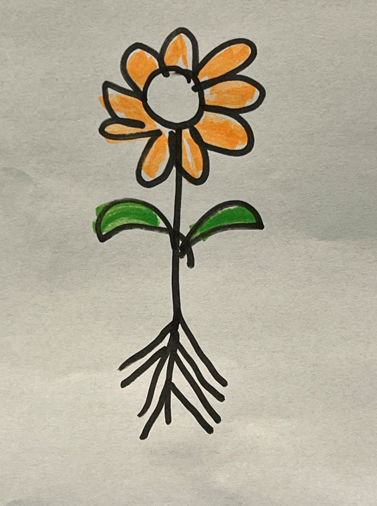
Practically all roots are white to gray in color. Only a few plants have colored roots. These are exceptions to the rule. They are usually plants which are that way because people have cultivated them for nutritional purposes (carrots or red beets, are an example) or they have medicinal potential. Later in the course, when nutrition is studied, attention will be paid to this phenomenon. But one could say that roots of plants are archetypally white to grey of color, like the brain. In the brain, we find white (nerve bundles, etc.) and grey matter (nerve cell bodies in the cortex) as well.
In summary, there is a certain correlation or similarity between the nerve-sense system of man and the root system of plants.
When one pays attention to the leaves of a plant, one can observe the following phenomena:
The characteristic color of leaves is green. They are green because of the chlorophyll they contain. Chlorophyll is a prerequisite for the process of photosynthesis. The central atom of the chlorophyll molecule is magnesium. Magnesium has a tremendous affinity to light. (In the early to the middle of the 20th century, magnesium, for instance, was used for flashlights in photography. Later in the course, when attention will be paid to the various minerals and substances which are used in anthroposophical pharmacology, the characteristics of magnesium will be studied).
Under the influence of sunlight, through photosynthesis, chlorophyll forms (complex-) carbohydrates out of CO2 (carbon dioxide), which it takes from the air, from the atmosphere, and water. Through this assimilation process, free O2 (oxygen) is produced and released into the atmosphere. Therefore, practically all free O2 in the atmosphere is made by plants, is a gift of the plant kingdom to man and the animal kingdom.
In man, the opposite / complementary process takes place. Through breathing in the lungs, free O2 is taken up into the blood stream from the atmosphere and delivered to the tissues in the body so that oxygenation can take place. In addition, in the lungs, CO2 is given off to the atmosphere. In the blood, hemoglobin is the protein which makes this process – the exchange of O2 and CO2 during expiration – possible. Interestingly, the central atom in the hemoglobin molecule is not magnesium but iron. Thus, man and the plant kingdom live in a true symbiosis: what the plant gives off to the atmosphere (free O2), is taken in by man and what is given off by man to the atmosphere (CO2 and water) is taken up by the plant.
Another primal phenomenon which Goethe discovered was that of complementary colors and their mutual relationships. He discovered that the eye, in the act of seeing, produces within the viewer, for each color which impacts on the retina, a complementary color as a subjective after image. Later in this course, when we will study the twelve senses of man, detailed information will be given on the light and color theories of Goethe. For instance when one looks at bright yellow for about twenty seconds and then closes one’s eyes, one will see an after image in the complementary color, namely blue, and vice versa. The yellowish-green of the chlorophyll and the purplish-red of the hemoglobin are opposite or complementary colors. That is why the leaves are green and the blood of man is red. Human blood could have been orange or green. Why is human blood not green but red? Because chlorophyll is (yellowish-) green! In nature, complementary biochemical processes will carry complementary colors. That is what Goethe found in his studies of nature. Since chlorophyll is (yellowish-) green, blood must be (purplish-) red.
To summarize, there is a certain correlation, a similarity but also a “complementary” between the leaves of a plant and the rhythmic system of man.
When one observes the flower of a plant, one can say that in this part, color has become predominant. Flowers can bloom in almost any possible color, and bring about joy and awe in the human soul. Flowers, and their products, like fruits and seeds, need warmth to ripen. The pinnacle of the plant’s growth is the seed, which is one stage on from the flower. The seed itself tends to be a simple structure but it bears within it the potential for a whole new plant.
Thus, as much light is necessary for photosynthesis as warmth is necessary for the development, the ripening of the flower, its seeds and fruits. Usually, the sun is the source for both light and warmth. But in laboratory settings one can clearly document the affinity of the leaf for light and the affinity of the flower for warmth. The flower and its organs (stamen, pistil, stigma, pollen, etc.) are the reproductive organs of the plant.
To summarize, there is a certain correlation, a similarity between the flower of a plant and the metabolic-limb system of man. If one were to make a drawing of a person and a plant to show their correlation, one would have to draw the person in an upside-down position. Therefore, one could say that a person is a plant upside down! (see figure 2).
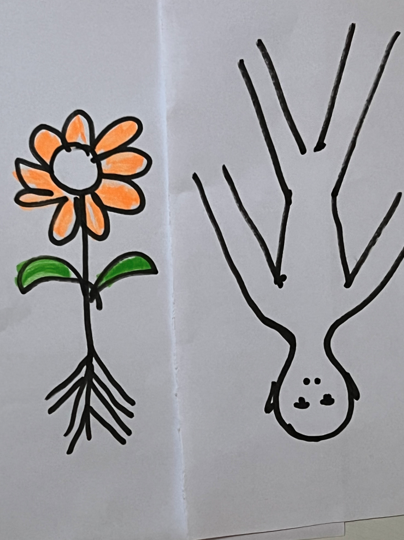
And what about the animal kingdom? The animal is very much oriented to the horizontal plane. Practically all animals have their spine, their whole anatomy, oriented to the horizontal. Therefore, the animal kingdom stands between the plant kingdom and man: it has a middle position. The animal has shifted 90 degrees compared to the plant.
Why is this image of a person as an upside-down plant so important? It has direct consequences for the choice of a plant or plant product to be used as therapy for a given illness. Suppose a patient is suffering from nervousness, insomnia, heightened irritability with respect to normal sensory perception. A plant which may be used as a remedy, in such a case is Valeriana officinalis.
Valerian (Valeriana officinalis, Valerianaceae) is a hardy perennial flowering plant, with heads of sweetly scented pink or white flowers that bloom in the summer months. Valerian flower extracts were used as a perfume in the sixteenth century.
Valerian has been used as a medicinal herb since at least the time of ancient Greece and Rome. Hippocrates described its properties, and Galen later prescribed it as a remedy for insomnia. In medieval Sweden, it was sometimes placed in the wedding clothes of the groom to ward off the “envy” of the elves. In the sixteenth century the Anabaptist reformer Pilgram Marpeck prescribed valerian tea for a sick woman.
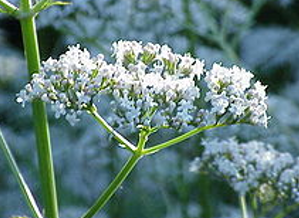
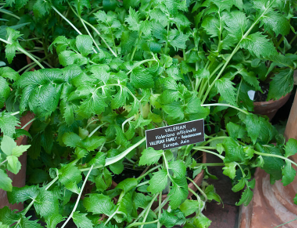
Valeriana flowers and foliage
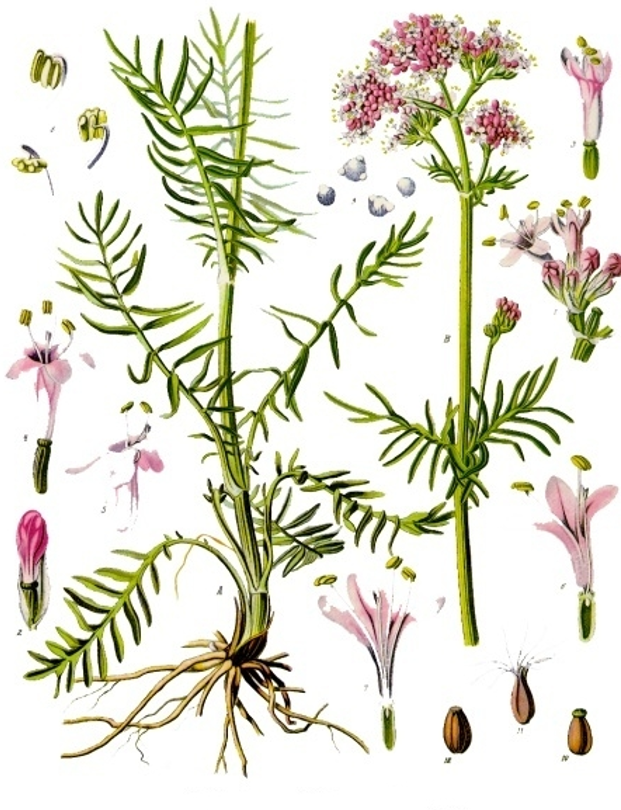
Valerian is most often used to treat sleeplessness (insomnia). It can be considered an alternative treatment instead of hypnotic drugs. It is also sometimes used as an alternative for sedatives, such as benzodiazepines in the treatment of certain anxiety disorders. Up till the early 1960’s Valeriana was the most commonly used medication for anxiety and bi-polar conditions.
Whether or not valerian is an efficacious treatment for insomnia is still a very open question. Multiple recent systematic reviews of the medical research literature and meta-analyses have produced conflicting conclusions regarding the efficacy of the substance. One systematic review and meta-analysis published in 2006 in the American Journal of Medicine concluded that, “The available evidence suggests that valerian might improve sleep quality without producing side effects.” However, another systematic review, published in 2007 in the journal Sleep Medicine Review, concluded that valerian was safe but not clinically efficacious for insomnia.
In the United States, valerian is sold as a nutritional supplement. Therapeutic use has increased as dietary supplements have gained in popularity, especially after the Dietary Supplement Health and Education Act was passed in 1994. This law allowed the distribution of many agents as over-the-counter supplements, and therefore allowed them to bypass the regulatory requirements of the Food and Drug Administration (FDA).
In addition to being used for the treatment of insomnia and other sleep disorders, valerian has also been used to treat anxiety and gastrointestinal pain caused by irritable bowel syndrome. It has also been used in alternative medicine to treat symptoms such as nervous tension, excitability, and stress, as well as intestinal colic or cramps and as a muscle relaxant.
It has a remarkable influence on the cerebrospinal system, and is used as a sedative for the higher central nerve centers in conditions of nervous unrest, St Vitus’ dance, hypochondria, neurologic pains and the like.
Valeriana allays pain and promotes sleep. It is of special use and benefit to those suffering from nervous overstrain, irritability, as it possesses none of the after-effects produced by narcotics. Though in ordinary doses, it exerts a quieting and soothing influence upon the brain and nervous system, large doses, too often repeated, have a tendency to produce pain in the head, heaviness and stupor. It is commonly administered as Tinctura Valerianae Ammonidata, or in a low potency (even in milligrams), and often in association with the alkaline bromides (“A Modern Herbal” by M. Grieve. Tiger Books International London. ISBN 1-85501-249-9).
The active components of Valeriana are primarily to be found in its roots. Therefore, Valeriana has an effect mainly on the nerve-sense system.
When we search for a remedy for a patient with, for instance, congestive heart disease, with a decrease of ejection fraction, we could consider giving Digitalis purpurea, or Foxglove.
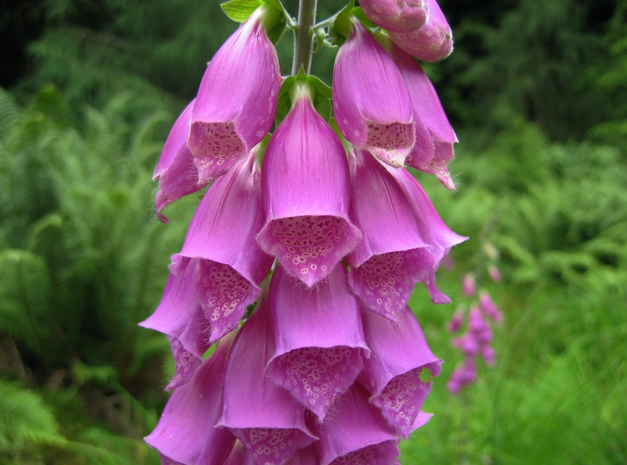
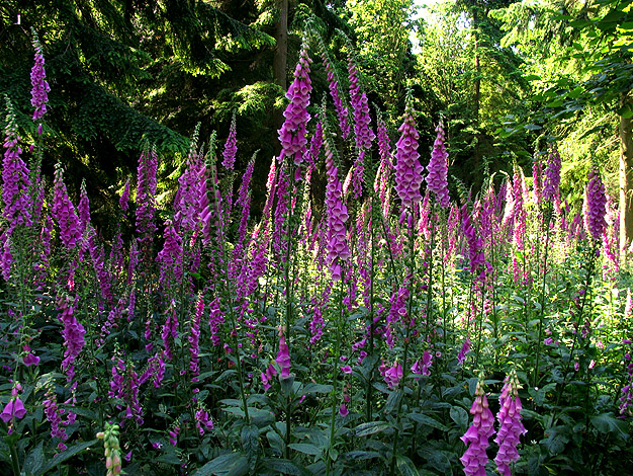
Digitalis, in the family Scrophulariaceae, native and widespread throughout most of temperate Europe. It is also naturalized in parts of North America and some other temperate regions. The plants are well known as the original source of the heart medicine digoxin, (also called digitalis or digitalin).
Digitalis purpurea contains four important glucosides of which three are cardiac stimulants. The most powerful is Digitoxin, an extremely poisonous and cumulative drug, insoluble in water. Digitalis has been used from early times in heart disease. It increases the activity of all forms of muscle tissue, but especially that of the heart and arterioles, due to the all-important property of the drug, which is its effect on the circulation.
The active components of Digitalis are primarily to be found in its leaves. Therefore, Digitalis purpurea has an effect mainly on the heart, as part of the rhythmic system.
In their first voyage to the New World, Christopher Columbus and his expedition were introduced to a plant whose smoke was called tobacco by the natives of Hispaniola. In 1560, Jean Nicot de Villemain brought tobacco seeds and leaves as a “wonder drug” to the French court. In 1586 the botanist Jaques Dalechamps gave the plant the name of Herba nicotiana, which was also adopted by Linnaeus. It was considered a decorative plant at first, then a panacea, before it became a common snuff and tobacco plant.
Tobacco arrived in Africa at the beginning of the 17th century. The leaf extract was a popular pest control method up to the beginning of the 20th century. In 1851, the Belgian chemist Jean Stas (1813-1891) was the first to prove the use of tobacco extract as a murder poison in the civilized world. The Belgian count Hippolyte Visart de Bocarmé had poisoned his brother-in-law with tobacco leaf extract in order to acquire some urgently needed money. This was the first exact proof of alkaloids in forensic medicine.
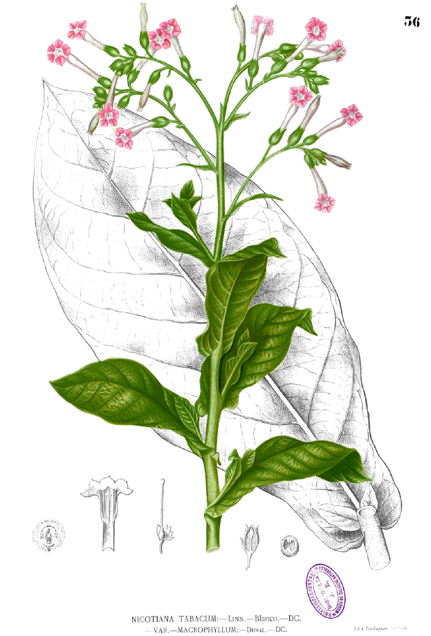
19th Century illustration of Nicotiana tabacum.
Nicotiana tabacum, or cultivated tobacco, is a perennial herbaceous plant. It is found only in cultivation, where it is the most commonly grown of all plants in the Nicotiana genus, and its leaves are commercially grown in many countries to be processed into tobacco. It grows to heights between 1 to 2 meters. Research is ongoing into its ancestry among wild Nicotiana species, but it is believed to be a hybrid of Nicotiana sylvestris, Nicotiana tomentosiformis, and possibly Nicotiana otophora.
Nicotiana tabacum (Tobacco) is another plant with a significant effect on the rhythmic system, especially on the lungs (and kidneys; why the kidneys are affected by the effects of Nicotiana will be discussed later). The main constituent is the alkaloid nicotine, which, when smoked, decomposes into metabolites like nicotianin, nicotinine, furfurol and nicoteline. The poisonous effects of tobacco smoke are due to these substances of decomposed nicotine. (Potentized) preparations of Nicotiana tabacum are used in the treatment of asthma, especially as an expectorant, but also as a smooth-muscle relaxant in bronchospasm. In addition, Nicotiana is a mild diuretic and has anti-hypertensive activities. This can be understood when one remembers the common origin of the embryological development of the kidneys, the airways and lungs.
The active alkaloids of Nicotiana are primarily to be found in its leaves. Therefore, Nicotiana tabacum has an effect mainly on the lungs, as part of the rhythmic system.
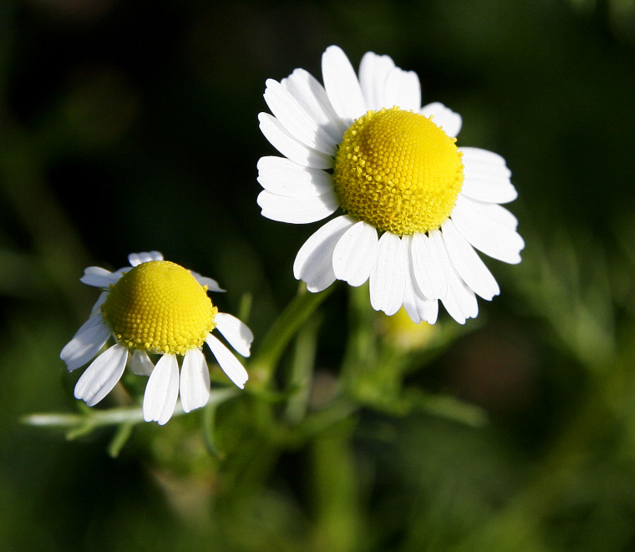
Matricaria chamomilla (synonym: Matricaria recutita), commonly known as chamomile (also spelled camomile), German chamomile, Hungarian chamomile (kamilla), wild chamomile or scented mayweed, is an annual plant of the composite family Asteraceae. M. chamomilla is the most popular source of the herbal product chamomile, although other species are also used as chamomile. The dried M. chamomilla flower s commonly used in herbal teas.
German chamomile (Matricaria recutita) essential oil in clear glass vial
German chamomile is used in herbal medicine for a sore stomach, irritable bowel syndrome, and as a gentle sleep aid. It is also used as a mild laxative and is anti-inflammatory and bactericidal.
For a sore stomach, some recommend taking a cup every morning without food for two to three months. It is also used as a mouthwash against oral mucositis. It has acaricidal properties against certain mites, such as Psoroptes cuniculi.
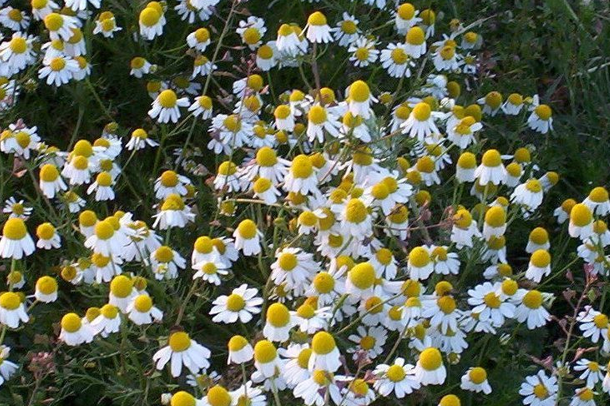
One of the active ingredients of its essential oil is the terpene bisabolol. Other active ingredients include farnesene, chamazulene, flavonoids (including apigenin, quercetin, patuletin and luteolin) and coumarin.
Dried chamomile has a reputation (among herbalists and medical doctors alike) for being incorrectly prepared because it is dried at a temperature above the boiling point of the volatile components of the plant. Potential pharmacology.
A 2006 review of the medical literature reported a number of beneficial effects for chamomile in in vitro and animal tests, but added more human clinical trials are needed before any firm conclusions can be drawn. Research with animals suggests antispasmodic, anxiolytic, anti-inflammatory and some anti-mutagenic and cholesterol-lowering effects for chamomile
Chamomile has improved healing time of wounds in animals. It also showed some benefit in an animal model of diabetes. In vitro chamomile has demonstrated moderate antimicrobial and antioxidant properties and significant antiplatelet activity, as well as preliminary results against cancer. Essential oil of chamomile was shown to be a potential antiviral agent against herpes simplex virus type 1&2 (HSV-2 and HSV-2) in vitro. Potential risks include interference with warfarin and infant botulism in very young children.
The methanol extract of Chamomile showed potent anti-allergic activity by inhibition of histamine release from mast cells in cell-mediated allergic models.
A recent prospective clinical study found twice-a-day chamomile compresses were as effective as hydrocortisone 1% ointment on peristomal (inflamed) skin lesions in colostomy patients.
In 2009, researchers at the University of Pennsylvania concluded the first controlled clinical trial of chamomile extract for generalized anxiety disorder (GAD). The results suggest chamomile may have modest anxiolytic activity in patients with mild to moderate GAD, although the results have not since been replicated.
Chamomilla officinalis is an annual plant with beautiful flowers, with white petals and bright yellow stamen. The Chamomile is not toxic. Its flowers, which contain etheric oils, are used for their anti-spasmodic activities, like dysmennorrhoea, spastic colon, colic pains, bloating, etc. The active components of Chamomilla officinalis are to be found in its flowers. Usually, Chamomile flowers are used as a warm compress on the affected area, like the pelvic region in case of severe menstrual cramps. Thus, Chamomilla officinalis has an effect mainly on the metabolic system.
Thus, an Anthroposophical health care professional will take into account where the origin of a symptom or disease is located and, if a plant remedy is chosen for relief or as a cure, the fact that a man is an “upside-down plant” is considered.
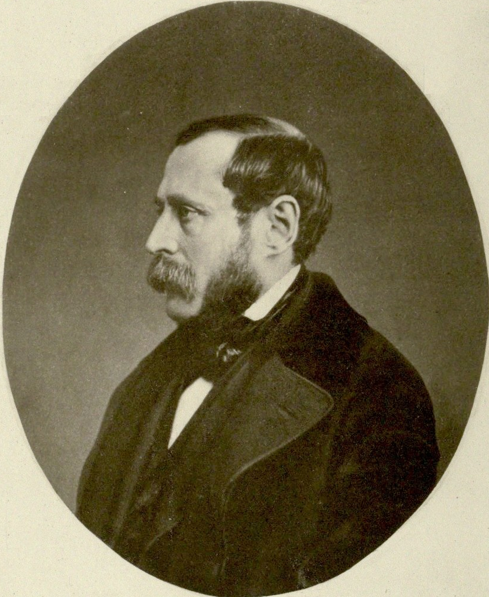
Jean Stas (1813-1891) was born in Leuven, Belgium, and trained initially as a physician. He later switched to chemistry and worked at the École Polytechnique in Paris under the direction of Jean-Baptiste Dumas. Stas and Dumas established the atomic weight of carbon by weighing a sample of the pure material, burning it in pure oxygen, and then weighing the carbon dioxide produced.
In 1840, Stas was appointed professor at the Royal Military School in Brussels. He acquired international fame by determining the atomic weights of the elements more accurately than had ever been done before, using an atomic mass of 16 for oxygen as his standard. His results disproved the hypothesis of the English physicist William Prout that all atomic weights must be integral multiples of that of hydrogen. These careful, accurate atomic weight measurements of Stas helped lay the foundation for the periodic system of elements of Dmitri Mendeleev and others.
Following the pioneering work of Lavoisier and his statement of the conservation of mass, the prolonged and exhaustive experiments of Stas supported the strict accuracy of this law in chemical reactions, even though they were carried out with other intentions. His research indicated that in certain reactions the loss or gain could not have been more than from 2 to 4 parts in 100,000. The difference in the accuracy aimed at and attained by Lavoisier on the one hand, and by Morley and Stas on the other, is enormous.
In 1850, Stas gave the evidence that the Belgian Count Hippolyte Visart de Bocarmé killed his brother-in-law by poisoning with nicotine.
Jean Stas retired in 1869 because of problems with his voice caused by a throat ailment. He became commissioner of the mint, but resigned in 1872 because he disagreed with the government’s monetary policy. Jean Stas died in Brussels and was buried at Leuven.
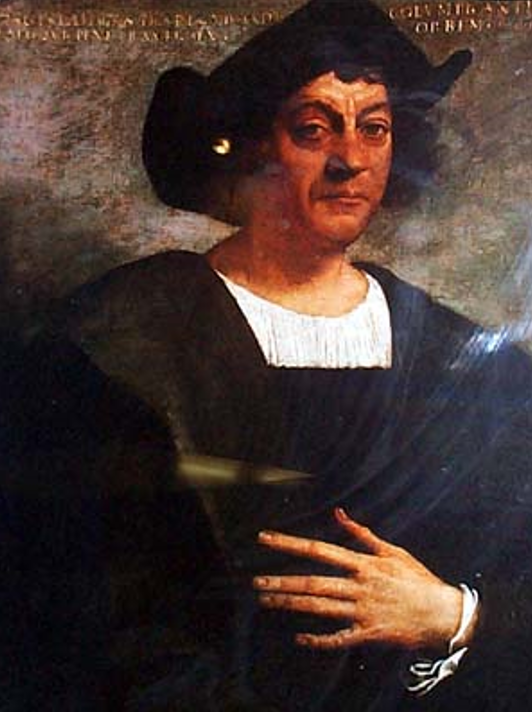
Christopher Columbus (born between October 31, 1450 and October 30, 1451 – 20 May 1506) was an Italian explorer, navigator, and colonizer, born in the Republic of Genoa (Italy).
Under the auspices of the Catholic Monarchs of Spain, he completed four voyages across the Atlantic Ocean that led to general European awareness of the American continents. Those voyages, and his efforts to establish permanent settlements on the island of Hispaniola, initiated the Spanish colonization of the New World.
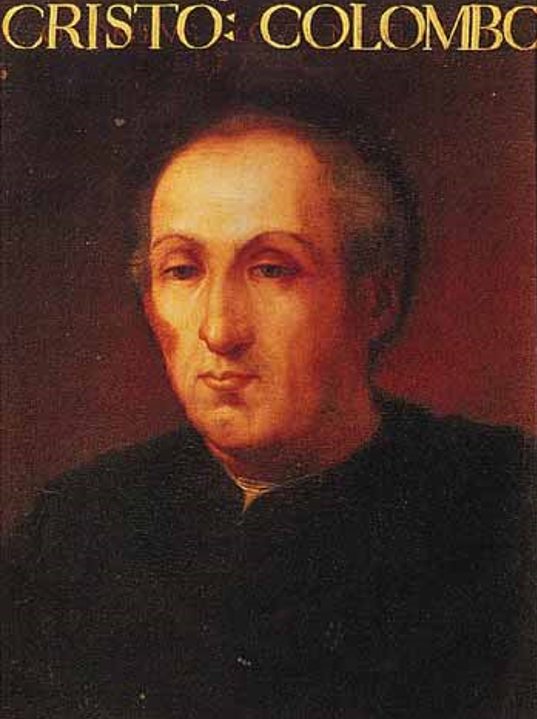
In the context of emerging western imperialism and economic competition between European kingdoms seeking wealth through the establishment of trade routes and colonies, Columbus’ speculative proposal, to reach the East Indies by sailing westward, eventually received the support of the Spanish crown, which saw in it a chance to gain the upper hand over rival powers in the contest for the lucrative spice trade with Asia. During his first voyage in 1492, instead of reaching Japan as he had intended, Columbus landed in the Bahamas archipelago, at a locale he named San Salvador. Over the course of three more voyages, Columbus visited the Greater and Lesser Antilles, as well as the Caribbean coast of Venezuela and Central America, claiming them for the Spanish Empire.

Though Columbus was not the first European explorer to reach the Americas (having been preceded by the Norwegian expedition led by Leif Ericson in the 11th century), Columbus’ voyages led to the first lasting European contact with the Americas, inaugurating a period of European exploration, conquest, and colonization that lasted for several centuries. They had, therefore, an enormous impact in the historical development of the modern Western world. Columbus himself saw his accomplishments primarily in the light of spreading the Christian tradition.
Never admitting that he had reached a continent previously unknown to Europeans, rather than the East Indies he had set out for, Columbus called the inhabitants of the lands he visited Indios (Spanish for “Indians”).
Columbus brought with him many indigenous plants (like the tobacco) and vegetables (like the potato), and illnesses like Syphilis (!).
Columbus’ strained relationship with the Spanish crown and its appointed colonial administrators in America led to his arrest and dismissal as governor of the settlements on the island of Hispaniola in 1500, and later to protracted litigation over the benefits which Columbus and his heirs claimed were owed to them by the crown.
